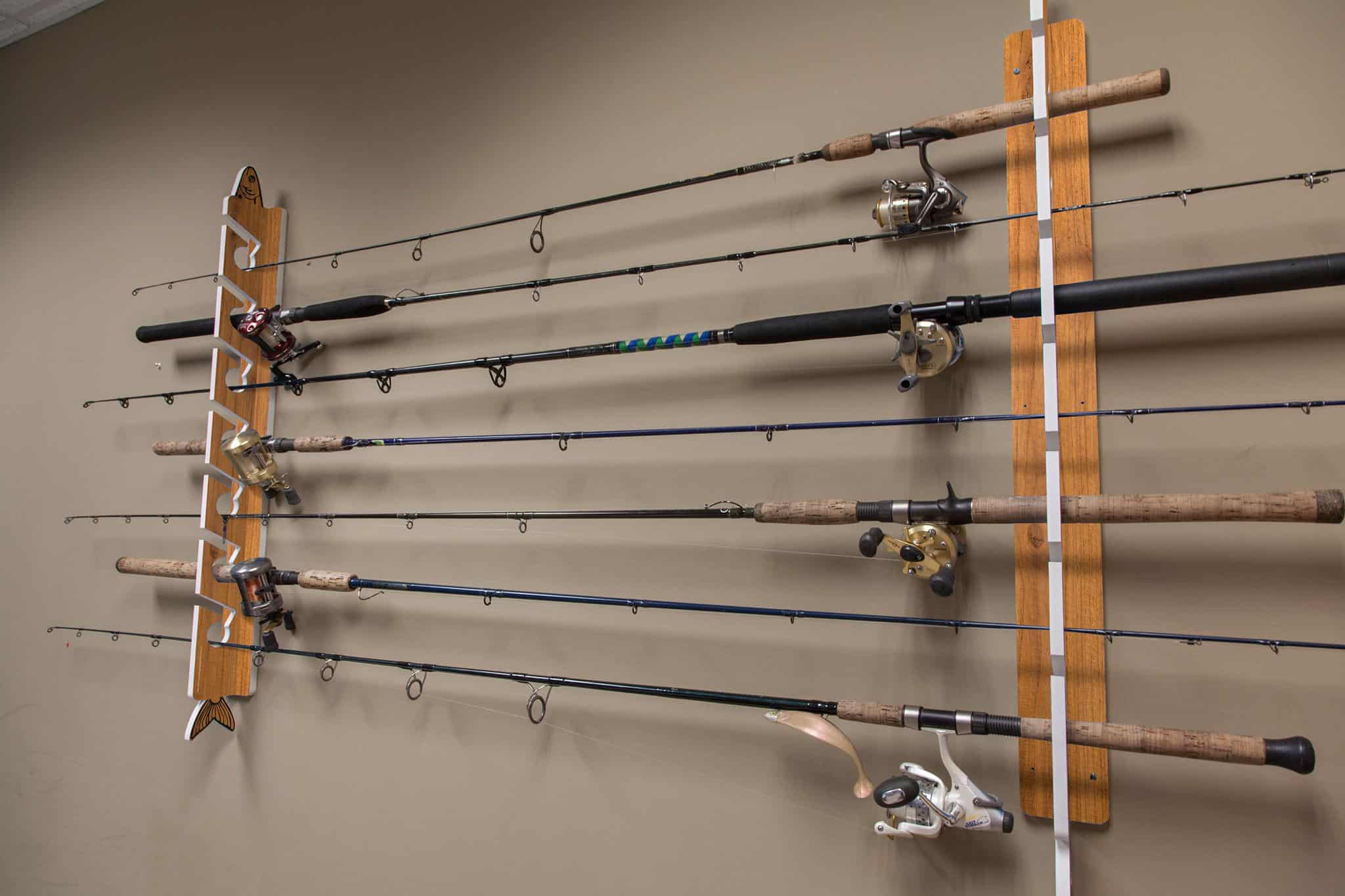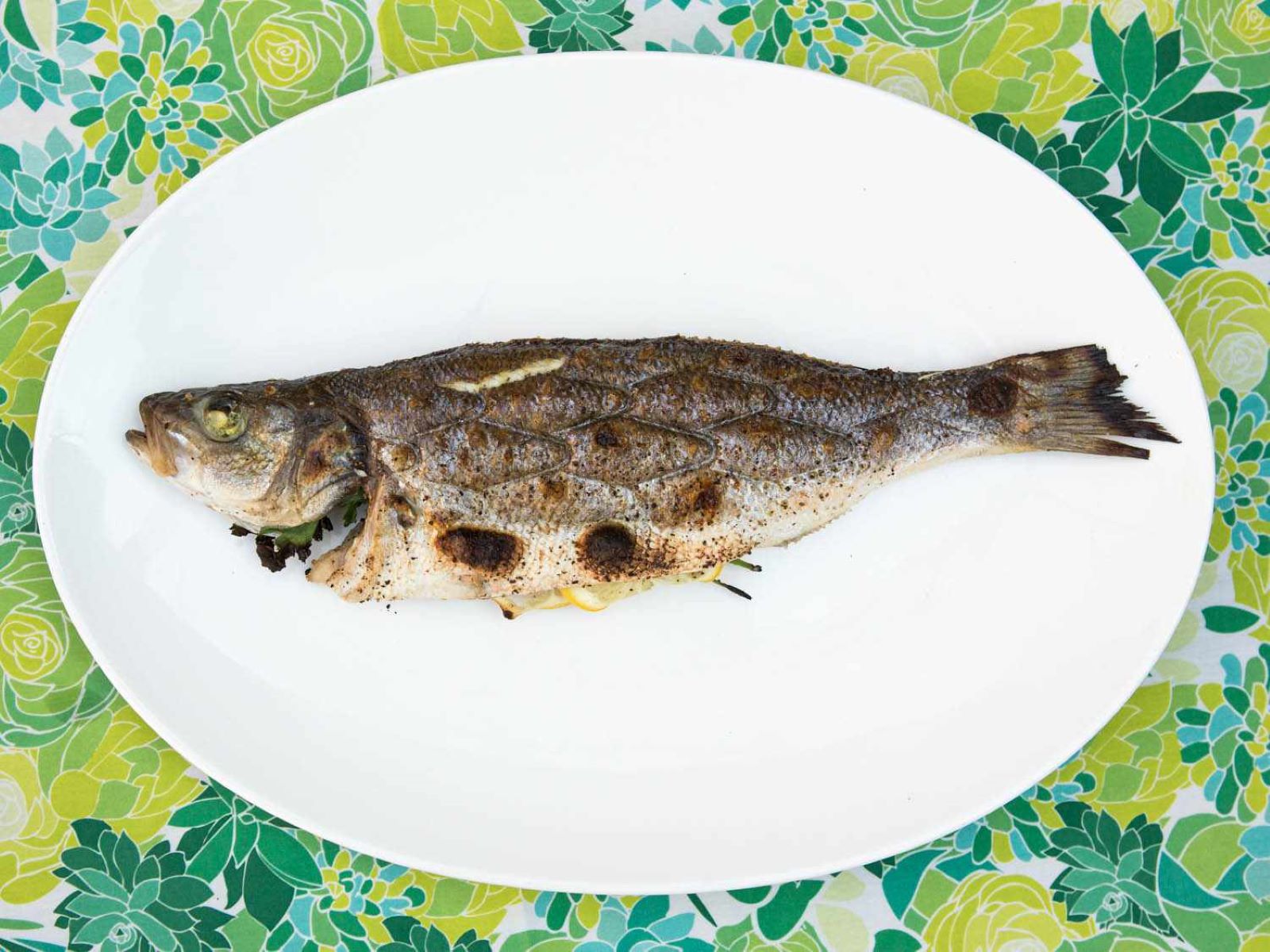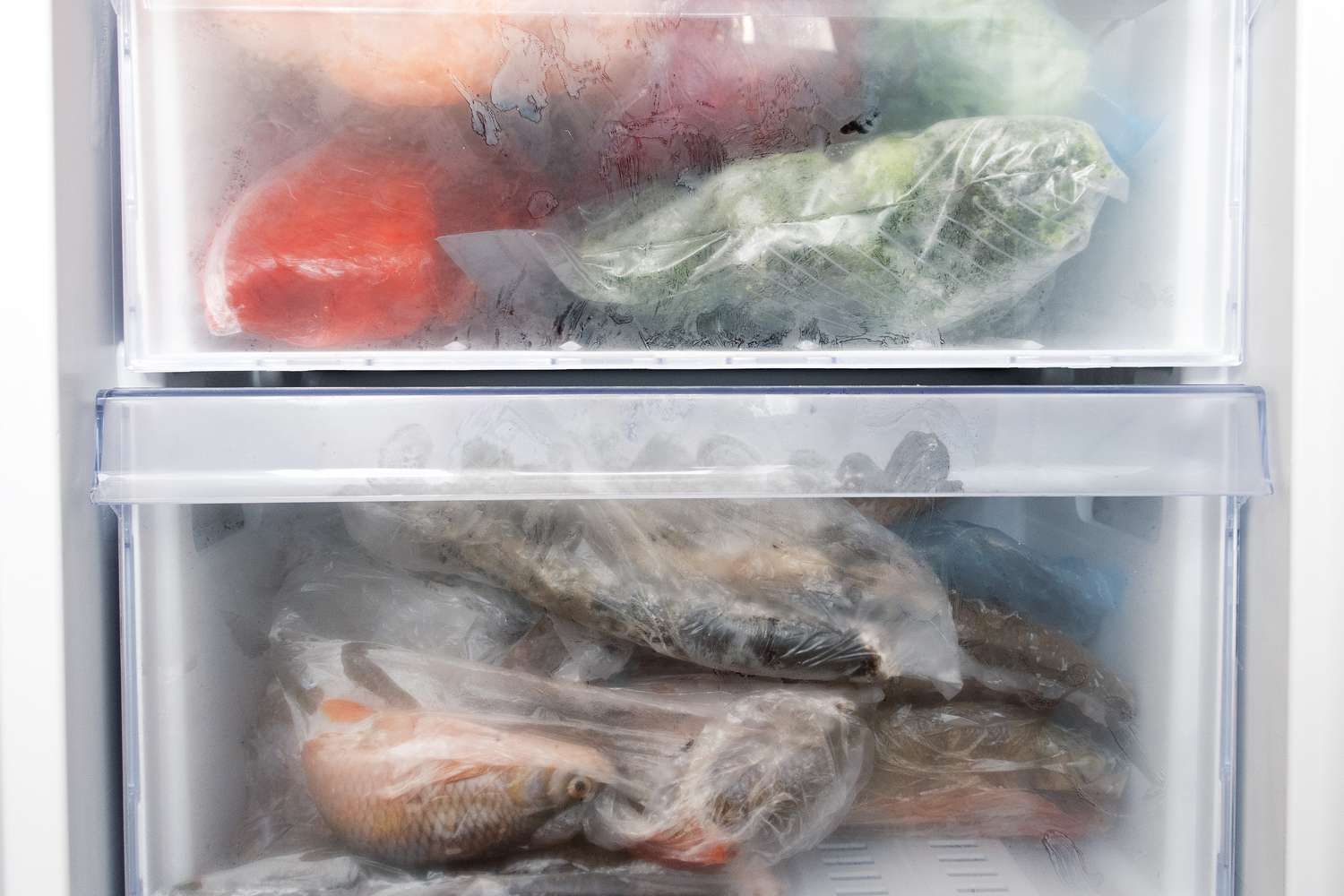

Articles
How To Store A Fishing Rod
Modified: January 6, 2024
Learn the best way to store your fishing rod to keep it safe and in great condition. Read our informative articles on fishing rod storage techniques today!
(Many of the links in this article redirect to a specific reviewed product. Your purchase of these products through affiliate links helps to generate commission for Storables.com, at no extra cost. Learn more)
Introduction
When it comes to enjoying the great outdoors, fishing is a popular pastime for many individuals. Whether you’re a casual angler or a dedicated enthusiast, taking care of your fishing equipment is crucial to ensure its longevity and performance. One essential component of any angler’s arsenal is the fishing rod. To ensure its longevity and optimal performance, proper storage is key.
In this article, we will explore the best practices for storing your fishing rod. From cleaning and maintenance to selecting the right storage location and options, we will cover everything you need to know to keep your fishing rod in top condition. Whether you’re storing your rod indoors, outdoors, or traveling with it, we have got you covered. So, let’s dive into the world of fishing rod storage!
Key Takeaways:
- Proper storage and maintenance of fishing rods is crucial for their longevity and optimal performance. From cleaning and selecting the right storage location to choosing the best storage option, these steps ensure your fishing rods remain in top condition for successful fishing adventures.
- Whether storing fishing rods indoors, outdoors, or traveling with them, taking the necessary precautions is essential to protect your valuable fishing gear. Proper cleaning, selecting the right storage location, and utilizing the best storage options will ensure your fishing rods are well-maintained and ready for use when needed.
Read more: How To Store Fishing Rods
Proper Cleaning and Maintenance
Before you store your fishing rod, it is important to give it a thorough cleaning and perform any necessary maintenance. This will help remove any dirt, grime, or saltwater residue that may have accumulated during your fishing adventures and prevent any potential damage or corrosion.
To clean your fishing rod, start by removing the reel and any other accessories. Gently wipe down the rod blank and reel seat with a soft cloth or sponge dampened with mild soap and water. Avoid using any harsh chemicals or abrasive materials that may scratch or damage the rod’s finish.
Next, inspect the guides for any signs of damage or corrosion. Use a gentle toothbrush or soft bristle brush to remove any dirt or debris that may be stuck in the guides. For stubborn residue, you can use a small amount of alcohol or a specialized guide cleaning solution.
Once the rod is clean, check the rod’s ferrules (the connections between the rod sections) for any looseness. If there is any play or wiggling, tighten the ferrules gently. If the ferrules are excessively loose or damaged, it may be necessary to have them repaired or replaced.
After cleaning and inspecting your fishing rod, it’s essential to perform any necessary maintenance. Check the reel for any signs of wear or damage, and lubricate the moving parts with a reel oil or grease recommended by the manufacturer. This will help ensure smooth operation and prevent any potential issues down the line.
Lastly, consider using a rod sleeve or cover to protect your fishing rod from scratches, dings, and exposure to sunlight. A rod sleeve will also help prevent tangles and make it easier to transport and store your rod.
By regularly cleaning and maintaining your fishing rod, you can prolong its lifespan and ensure optimal performance each time you hit the water.
Selecting the Right Storage Location
Choosing the right storage location for your fishing rod is essential to protect it from damage and ensure its longevity. Here are some factors to consider when selecting the ideal storage spot:
1. Temperature and Humidity
Extreme temperatures and high humidity can have detrimental effects on your fishing rod. Avoid storing it in areas with fluctuating temperatures or high humidity levels, such as attics or basements. Instead, opt for a storage location where the temperature remains relatively stable, ideally between 50 to 70 degrees Fahrenheit.
2. Protection from Sunlight
Direct sunlight can cause the rod’s finish to fade and weaken the rod’s materials over time. To prevent this, choose a storage spot away from windows or any other sources of intense sunlight. If you have no other option and need to store your fishing rod in a sun-exposed area, consider covering it with a protective rod sleeve or using a rod rack with built-in UV protection.
Read more: How To Store Fishing Rods In Garage
3. Away from Moisture
Moisture can lead to mold, rust, and corrosion, which can severely damage your fishing rod. Keep your rod away from damp areas like basements, garages, or outdoor sheds prone to leaks. If you must store your rod in a potentially humid environment, use desiccant packets or a dehumidifier to minimize moisture levels in the area.
4. Accessibility and Safety
Consider the ease of access to your fishing rod when selecting a storage location. Make sure it is easily reachable and not obstructed by other items. Additionally, choose a spot where your rod is safe from being accidentally bumped or knocked over, which could cause damage.
5. Vertical Storage
Storing your fishing rod vertically is the best way to prevent undue stress on the rod blank and guides. Utilize rod racks or wall-mounted holders specifically designed for fishing rods. If you don’t have access to such racks, you can use PVC pipe capped at one end to create a DIY rod holder.
By considering these factors when selecting the right storage location, you can ensure the safety and longevity of your fishing rod, allowing you to enjoy many successful fishing trips in the future.
Choosing the Right Rod Storage Option
Once you have determined the ideal storage location for your fishing rod, it’s time to select the right storage option. There are several choices available, each with its own advantages and considerations. Here are some popular rod storage options to consider:
Read more: How To Store Fishing Rods In Car
1. Fishing Rod Racks
Fishing rod racks are specially designed to hold multiple fishing rods securely and upright. They come in various styles, including wall-mounted racks, freestanding racks, and portable racks. Racks provide easy accessibility and keep your rods organized, making it a great option for anglers with multiple rods.
2. Rod Tubes and Cases
Rod tubes and cases provide excellent protection for your fishing rod during transportation and storage. These cylindrical or rectangular containers are typically made from durable materials like PVC or hard plastic and have foam padding inside to cushion the rod. They are ideal for anglers who frequently travel or need extra protection for their rods.
3. Ceiling or Overhead Storage
If you have limited floor space, ceiling or overhead storage is an effective solution. This involves installing brackets or clips on the ceiling or wall and suspending your fishing rods vertically. Make sure to choose sturdy and reliable hooks or brackets to securely hold the weight of your rods.
4. Individual Rod Socks or Slings
Individual rod socks or slings are long, flexible sleeves that cover and protect each fishing rod individually. These sleeves help prevent tangles and scratches while keeping your rods organized. They are a good option for anglers with limited space or who prefer to store their rods individually rather than in a rack.
Read more: How To Store 2-Piece Fishing Rod
5. Custom Built Storage Units
If you have the skills and resources, you can create a custom-built storage unit tailored to your specific needs. This can be a wall-mounted system with shelves, hooks, and compartments designed to accommodate your fishing rods, reels, and accessories. Custom storage units offer versatility and can be customized to fit your available space.
Consider the number of rods you own, available space, and your specific storage needs when deciding on the right storage option for your fishing rods. No matter which option you choose, always ensure that your rods are protected, secure, and easily accessible when you’re ready to hit the water.
Storing Fishing Rods Indoors
Storing your fishing rods indoors is a popular choice for many anglers. It offers protection from the elements and allows for easy accessibility. Here are some tips for storing your fishing rods indoors:
1. Vertical Storage
As mentioned earlier, storing your fishing rods vertically is the best way to prevent unnecessary stress on the rod blanks and guides. Utilize rod racks or wall-mounted holders to keep your rods upright. This helps maintain their shape and prevents any damage that may occur with horizontal storage.
2. Keep Them Organized
Group your fishing rods by type, length, or usage to keep them organized. This way, you can easily locate the specific rod you need when heading out for a fishing trip. Label or tag your rods, especially if you have multiple ones that look similar.
Read also: 11 Best Fishing Rod Storage For 2024
3. Avoid Overcrowding
Avoid overcrowding your fishing rods in a storage space. Make sure there is enough room between each rod to prevent them from tangling or knocking against each other. This can be achieved by utilizing a rack with sufficient spacing for each rod or by using individual rod socks to keep them separate.
4. Protect the Tips
The tips of your fishing rods are particularly vulnerable to damage. To protect them, use foam rod tip protectors or pool noodles cut to size. Slide them over the tips of your rods to cushion them and prevent accidental bumps or impacts.
5. Maintain Temperature and Humidity
Ensure that the storage area maintains a stable temperature and humidity level. Extreme temperature fluctuations or high humidity can cause damage to your fishing rods. If the storage area tends to be humid, consider using a dehumidifier or moisture-absorbent products to maintain optimal conditions.
6. Regularly Check and Rotate
Periodically check your fishing rods for any signs of damage or deterioration. Rotate the rods occasionally to prevent one side from bearing too much weight continuously. This helps maintain their structural integrity and ensures even wear over time.
By following these guidelines, you can effectively store your fishing rods indoors, keeping them safe and ready for your next fishing adventure.
Read more: How To Store Fish While Fishing
Storing Fishing Rods Outdoors
Storing fishing rods outdoors requires extra care to protect them from the elements and potential damage. If you don’t have adequate indoor storage space or need to keep your rods easily accessible for quick fishing trips, here are some tips for storing your fishing rods outdoors:
1. Covered Storage
Whenever possible, choose a covered storage option to shield your fishing rods from direct exposure to sunlight, rain, and other outdoor elements. A shed, garage, or storage box with a waterproof cover can provide adequate protection.
2. Rod Tubes or Cases
Using rod tubes or cases is highly recommended for outdoor storage. These protective containers offer extra protection against moisture, UV rays, and physical damage. Choose a weather-resistant tube or case made from durable materials to ensure long-term protection.
3. Avoid Ground Contact
When storing your fishing rods outdoors, avoid placing them directly on the ground or any wet surfaces. Moisture from the ground can seep into the rods and cause damage. Use a rod rack or hang your rods vertically to keep them off the ground.
Read more: How To Store Fish
4. Secure Storage
Ensure your storage solution securely holds and protects your fishing rods against wind or accidental knocks. Use rod holders or racks specifically designed for outdoor use, as they are often more durable and resistant to the elements. Consider using straps or bungee cords to secure the rods to prevent them from falling or shifting during strong winds.
5. Regular Maintenance
Outdoor storage exposes your fishing rods to more wear and tear. Regularly inspect your rods for any signs of damage and perform routine maintenance. Clean the rods and reels regularly to remove any dirt, saltwater residue, or debris that may have accumulated.
6. Bring Them Inside during Inclement Weather
If severe weather conditions are forecasted, it is advisable to bring your fishing rods inside or find a more protected storage area. Extreme heat, heavy rain, or strong winds can cause extensive damage to your rods. It’s better to err on the side of caution and protect your valuable fishing gear.
By implementing these strategies, you can safely store your fishing rods outdoors, keeping them protected and ready for your next fishing excursion.
Traveling with Fishing Rods
Traveling with fishing rods requires extra care to ensure they arrive at your destination safely and in optimal condition. Whether you’re heading to your favorite fishing spot or going on a fishing trip, here are some tips to help you travel with your fishing rods:
Read more: How To Store Caught Fish
1. Invest in a Quality Rod Travel Case
A quality rod travel case is essential to protect your fishing rods during transportation. Look for a sturdy and durable case specifically designed for travel. Choose a case that provides ample padding and compartments to securely hold your rods and prevent them from moving or rubbing against each other.
2. Disassemble and Pack Properly
Before packing your fishing rods, disassemble them into their individual sections. This will make them easier to transport and reduce the risk of damage. Wrap each rod section with a soft cloth or rod socks to protect them from scratches or dings. Secure the sections together with rubber bands or Velcro straps to prevent them from separating.
3. Use Protective Tube or Pipe Insulation
To add an extra layer of protection to your fishing rods, consider using foam tube or pipe insulation. Cut the insulation into appropriate lengths and slip them over each rod section. This will provide cushioning and prevent the rods from banging against each other during travel.
4. Check Airline Regulations
If you’re planning to travel by air, make sure to check the specific regulations and policies of the airline regarding traveling with fishing rods. Some airlines may require you to pack your rods in a hard case or may have size restrictions. It’s essential to familiarize yourself with the rules beforehand to avoid any surprises at the airport.
Read more: How To Store Fishing Poles
5. Carry Important Tools and Accessories Separately
Separate your fishing tools and accessories from your rods when traveling. Pack things like reels, hooks, lures, and lines in a separate bag or tackle box. This will help to distribute the weight more evenly and prevent damage to your rods from sharp hooks or heavy items.
6. Keep Valuables with You
If you’re traveling with expensive or sentimental fishing gear, it’s best to keep it with you rather than checking it in as luggage. Carrying on your rods and valuable fishing equipment will ensure that you have control over their safety and minimize the risk of loss or damage.
By following these tips, you can travel with your fishing rods confidently, knowing they are well-protected and ready for your fishing adventures.
Tips for Long-term Storage
If you need to store your fishing rods for an extended period, such as during the offseason or when you won’t be using them for a while, it’s vital to take some extra precautions to ensure their longevity. Here are some tips for long-term storage of your fishing rods:
1. Thoroughly Clean and Dry
Before storing your fishing rods for an extended period, make sure to clean them thoroughly. Remove any dirt, saltwater residue, or debris that may be present. Pay particular attention to the guides and reel seat. Once cleaned, ensure that your rods are completely dry to prevent the growth of mold or mildew.
Read more: How To Store Fishing Magnets
2. Inspect for Damage
Take the time to inspect each rod section, guides, and reel for any signs of damage. Look for cracks, worn-out guides, or loose reel seats. Repair any minor damages or seek professional assistance for major repairs. It’s best to address any issues before storing the rods long-term to prevent further damage.
3. Remove Reels and Accessories
If you’re storing your fishing rods for a prolonged period, remove the reels, lines, and any other accessories attached to them. This will prevent any unnecessary stress on the rod blanks and protect the components from potential damage.
4. Use Rod Sleeves or Socks
Consider using rod sleeves or socks to provide an additional layer of protection for your fishing rods. These sleeves prevent scratches, tangles, and accidental damage during storage. Slide the rod sleeves over each rod section or use a large enough sleeve to accommodate the entire rod.
5. Store in a Climate-Controlled Environment
If possible, store your fishing rods in a climate-controlled environment. Extreme temperatures, high humidity, or rapid fluctuations can damage the rods over time. A temperature-controlled room or storage unit is ideal for long-term storage, as it provides stable conditions that help preserve the integrity of the rods.
Read more: How To Store Fish Oil
6. Store Upright in a Rod Rack
For long-term storage, it’s best to store your fishing rods upright to minimize stress on the blanks and guides. Utilize a rod rack specifically designed for long-term storage. Make sure the rack provides proper support and spacing between the rods to prevent tangling or damage.
7. Rotate Occasionally
To prevent any warping or uneven stress on the rod blanks, rotate the rods occasionally during long-term storage. This helps distribute the weight evenly and ensures that one side of the rod doesn’t bear the full load for an extended period.
8. Regularly Check and Maintain
Occasionally check your fishing rods during long-term storage to ensure they remain in good condition. Inspect for any signs of damage, mold, or mildew. If necessary, clean and dry the rods again before returning them to storage.
By following these tips, you can confidently store your fishing rods for an extended period, knowing that they are well-maintained and protected until you’re ready to use them again.
Conclusion
Proper storage of your fishing rods is essential to ensure their longevity and optimal performance. Whether you’re storing them indoors, outdoors, or traveling with them, taking the necessary precautions will help protect your valuable fishing gear and enhance your fishing experience.
Start by thoroughly cleaning and maintaining your fishing rods before storing them. Remove any dirt, saltwater residue, or debris and check for any signs of damage. This will help prevent corrosion and ensure your rods are in top condition.
Selecting the right storage location is crucial. Consider factors such as temperature, humidity, protection from sunlight, and accessibility when choosing where to store your fishing rods. Vertical storage in rod racks or wall-mounted holders is recommended to prevent stress on the rod blanks and guides.
Choose the right storage option based on your needs and available space. Fishing rod racks, rod tubes or cases, ceiling or overhead storage, individual rod socks or slings, and custom-built storage units are some options to consider.
When storing your fishing rods outdoors, opt for covered storage and utilize rod tubes or cases for extra protection against the elements. Avoid ground contact and secure your rods to prevent them from falling or shifting during strong winds. Regular maintenance and bringing your rods inside during severe weather conditions are also important.
Traveling with fishing rods requires special care. Invest in a quality rod travel case, disassemble and pack the rods properly, and carry important tools and accessories separately. Check airline regulations if traveling by air, and keep valuables with you instead of checking them in as luggage.
For long-term storage, thoroughly clean and dry your fishing rods, inspect for damage, remove reels and accessories, and use rod sleeves or socks for added protection. Store them in a climate-controlled environment, upright in a rod rack, and occasionally rotate them to distribute weight evenly.
By following these guidelines, you can ensure your fishing rods remain in top condition, ready for your next fishing adventure. Proper storage and maintenance will not only extend the lifespan of your fishing rods but also contribute to a more enjoyable and successful fishing experience. So, take the time to care for your fishing gear, and it will serve you well for years to come.
Frequently Asked Questions about How To Store A Fishing Rod
Was this page helpful?
At Storables.com, we guarantee accurate and reliable information. Our content, validated by Expert Board Contributors, is crafted following stringent Editorial Policies. We're committed to providing you with well-researched, expert-backed insights for all your informational needs.






0 thoughts on “How To Store A Fishing Rod”